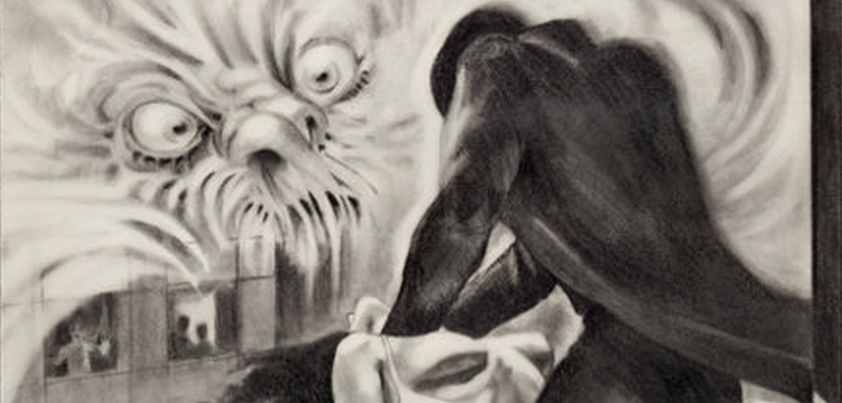 This horror story from Harlan Ellison uses magical realism to explain a crime: the 1964 murder of Kitty Genovese. Newspapers at the time (incorrectly) reported that 38 people, none of whom did anything to help, witnessed her stabbing. Here, a witness to a particularly brutal murder senses an evil presence. She later learns that it was a form of black mass, and joins the demonic cult as a means of survival. Themes include negative aspects of city life (competitive pressure, lack of connection, loneliness), behavioral effects of city life (depression, insensitivity, anger, rudeness, aggression, violence), supernatural (demonic) forces, and cultism. More…
This horror story from Harlan Ellison uses magical realism to explain a crime: the 1964 murder of Kitty Genovese. Newspapers at the time (incorrectly) reported that 38 people, none of whom did anything to help, witnessed her stabbing. Here, a witness to a particularly brutal murder senses an evil presence. She later learns that it was a form of black mass, and joins the demonic cult as a means of survival. Themes include negative aspects of city life (competitive pressure, lack of connection, loneliness), behavioral effects of city life (depression, insensitivity, anger, rudeness, aggression, violence), supernatural (demonic) forces, and cultism. More…
Archives
The Demon Lover
 In this horror story by Elizabeth Bowen, a woman returns to her large, war-damaged city house to collect personal items. The house had been locked up, nobody knew she was coming, yet there is a letter addressed to her sitting on a table. It had been hand delivered earlier that day and is an anniversary greeting ending with the words: You may expect me at the hour arranged. Someone (possibly the spirit of a former soldier-lover) may be in the house or coming for her. Themes include the trauma of war, gender stereotypes, doubt, imagination and fear, betrayal and revenge. More…
In this horror story by Elizabeth Bowen, a woman returns to her large, war-damaged city house to collect personal items. The house had been locked up, nobody knew she was coming, yet there is a letter addressed to her sitting on a table. It had been hand delivered earlier that day and is an anniversary greeting ending with the words: You may expect me at the hour arranged. Someone (possibly the spirit of a former soldier-lover) may be in the house or coming for her. Themes include the trauma of war, gender stereotypes, doubt, imagination and fear, betrayal and revenge. More…
Poison
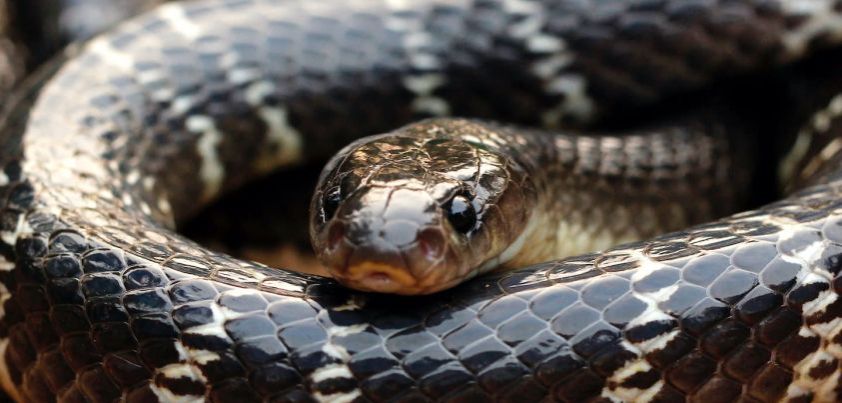 Roald Dahl is best known for short stories that make their point using dark humor and have a surprise ending. This story exhibits neither of these features. The central theme is the racism that existed under British colonial rule. Dahl gets the message across through this allegory about the way a British businessman acted badly towards an Indian doctor who answered his call for help in the middle of the night and may well have saved his life. In the story we learn that there are several kinds of poison. Unlike the deadly krait, some of them kill quite slowly. More…
Roald Dahl is best known for short stories that make their point using dark humor and have a surprise ending. This story exhibits neither of these features. The central theme is the racism that existed under British colonial rule. Dahl gets the message across through this allegory about the way a British businessman acted badly towards an Indian doctor who answered his call for help in the middle of the night and may well have saved his life. In the story we learn that there are several kinds of poison. Unlike the deadly krait, some of them kill quite slowly. More…
The Colour Out of Space
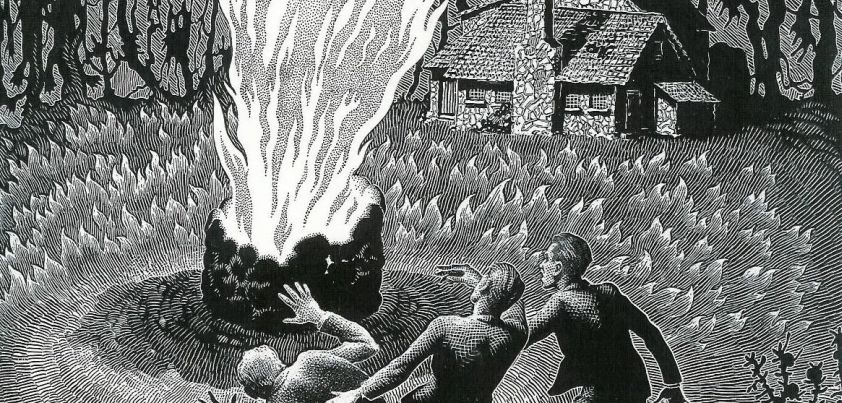 In this cosmic horror story by H. P. Lovecraft, a surveyor becomes curious about five acres of grey desolation known as “blasted heath”. He learns that a meteor like no other found on earth had landed near a farmhouse on the site. Within the meteor scientists found a globule of unearthly colour which, when cracked open, released a presence that caused every living thing nearby to mutate. Plants grew unnaturally large but were inedible. Animal life, including the farming family, went mad and deformed into grotesque shapes before dying. Themes include curiosity, fear, scepticism, the supernatural, realms beyond human understanding. More…
In this cosmic horror story by H. P. Lovecraft, a surveyor becomes curious about five acres of grey desolation known as “blasted heath”. He learns that a meteor like no other found on earth had landed near a farmhouse on the site. Within the meteor scientists found a globule of unearthly colour which, when cracked open, released a presence that caused every living thing nearby to mutate. Plants grew unnaturally large but were inedible. Animal life, including the farming family, went mad and deformed into grotesque shapes before dying. Themes include curiosity, fear, scepticism, the supernatural, realms beyond human understanding. More…
Oh, Whistle and I’ll Come To You, My Lad
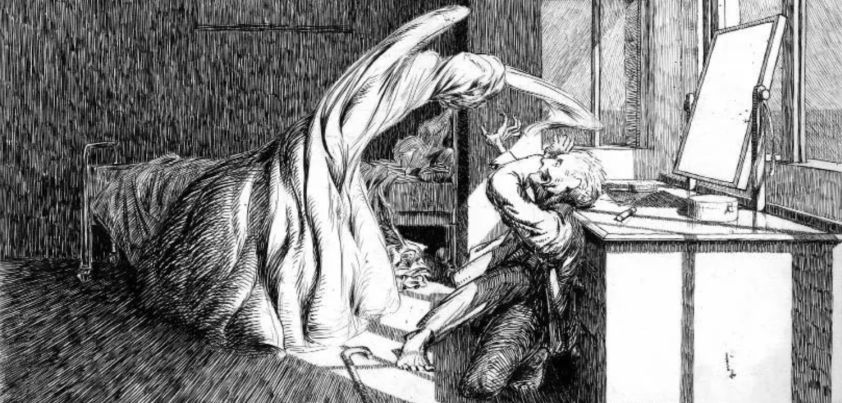 In this story by M. R. James, a colleague asks a young university professor to scope out some monastic ruins for a possible archaeological dig while away on a golfing holiday. As he investigates the area near what would have been the altar, he finds an artificial cavity in the masonry that contains an ancient bronze whistle with strange inscriptions. He was originally unhappy that the only available room in his hotel had two beds but this proves fortunate, providing the terrifying personage he “whistles up” a place to spend the night. Themes include fear, agnosticism, the supernatural. More…
In this story by M. R. James, a colleague asks a young university professor to scope out some monastic ruins for a possible archaeological dig while away on a golfing holiday. As he investigates the area near what would have been the altar, he finds an artificial cavity in the masonry that contains an ancient bronze whistle with strange inscriptions. He was originally unhappy that the only available room in his hotel had two beds but this proves fortunate, providing the terrifying personage he “whistles up” a place to spend the night. Themes include fear, agnosticism, the supernatural. More…
Heavy-Set
 Ray Bradbury‘s character Lenny (Leonard) lives at home with his mother and has a lot going for him. He has a body-builder’s physique, secure job, nice car, and no shortage of girls wanting to go out with him. Unfortunately, he is also mentally and socially challenged. He doesn’t take disappointment or ridicule well, often barely able to control his temper. The story takes place over a Halloween night. Lenny is excited, but the party he was looking forward to is a flop, leading to a potentially explosive homecoming. Themes include alienation, repression, interdependence, arrested development, fitting in, fear, despair. More…
Ray Bradbury‘s character Lenny (Leonard) lives at home with his mother and has a lot going for him. He has a body-builder’s physique, secure job, nice car, and no shortage of girls wanting to go out with him. Unfortunately, he is also mentally and socially challenged. He doesn’t take disappointment or ridicule well, often barely able to control his temper. The story takes place over a Halloween night. Lenny is excited, but the party he was looking forward to is a flop, leading to a potentially explosive homecoming. Themes include alienation, repression, interdependence, arrested development, fitting in, fear, despair. More…
The Man in the Black Suit
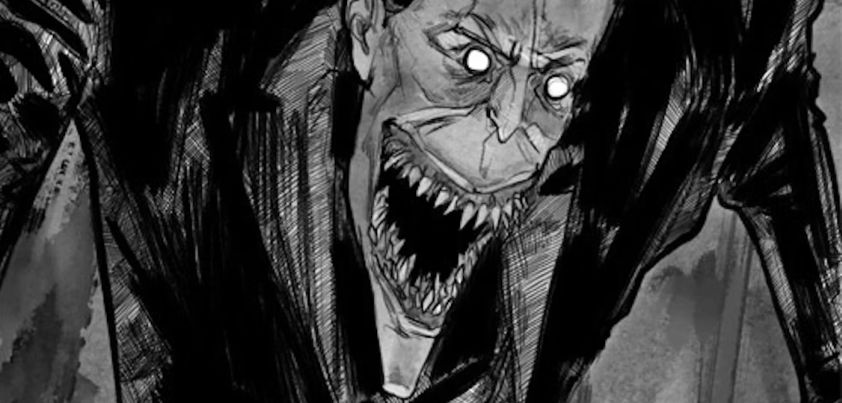 This story from Stephen King builds on a common legend in folklore in which an unsuspecting protagonist is tempted by the devil. King made two changes to the standard plot that result in a truly frightening the tale. First, the devil’s target is an innocent nine-year-old boy. Second, instead of the devil’s usual objective of offering an earthly reward in exchange for the boy’s soul, this devil is hungry and plans to give the poor lad a heavenly reward by eating him. Themes: isolation, innocence, the supernatural, deception, fear, religious belief, life-long trauma, aging and death. More…
This story from Stephen King builds on a common legend in folklore in which an unsuspecting protagonist is tempted by the devil. King made two changes to the standard plot that result in a truly frightening the tale. First, the devil’s target is an innocent nine-year-old boy. Second, instead of the devil’s usual objective of offering an earthly reward in exchange for the boy’s soul, this devil is hungry and plans to give the poor lad a heavenly reward by eating him. Themes: isolation, innocence, the supernatural, deception, fear, religious belief, life-long trauma, aging and death. More…
The Easthound
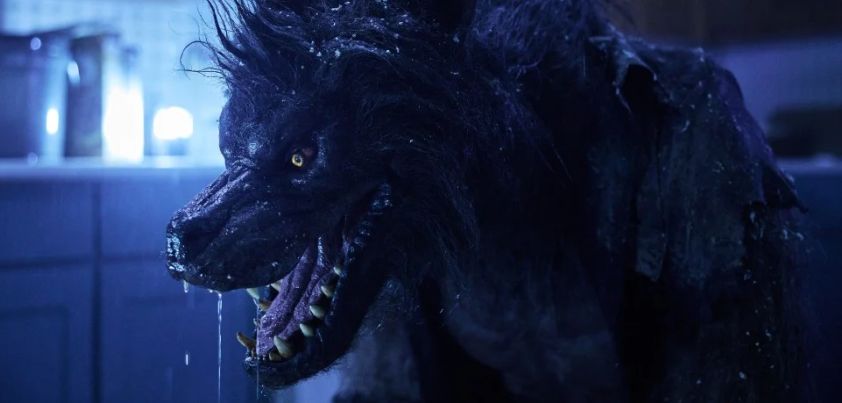 This post-apocalyptic horror story by Nalo Hopkinson redefines the concept of puberty. A virus has swept the world, causing all who achieve adulthood to “sprout” into ravenous, werewolf-like beasts. To escape them, children hide in small groups. The story is told from the perspective of twin sisters, one of whom naively believes she caused the virus by inventing the word easthound. Their group are closely monitoring an older boy who is about to undergo the change and will soon have to leave them, when the unexpected occurs. Themes include violence, camaraderie, survival, childhood innocence, adult predation. More…
This post-apocalyptic horror story by Nalo Hopkinson redefines the concept of puberty. A virus has swept the world, causing all who achieve adulthood to “sprout” into ravenous, werewolf-like beasts. To escape them, children hide in small groups. The story is told from the perspective of twin sisters, one of whom naively believes she caused the virus by inventing the word easthound. Their group are closely monitoring an older boy who is about to undergo the change and will soon have to leave them, when the unexpected occurs. Themes include violence, camaraderie, survival, childhood innocence, adult predation. More…
The Lottery
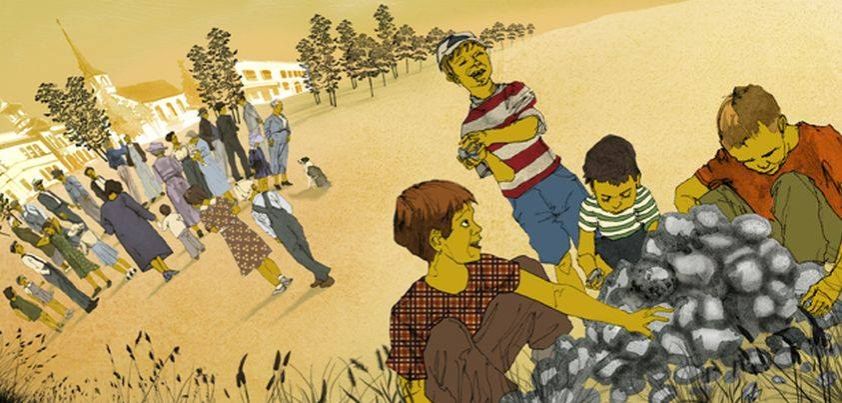 Author Shirley Jackson had no idea of the angry reaction The Lottery would receive when it first appeared in 1948. The story tells how each year the otherwise ‘normal’ people in a small American farming town perform a gruesome ritual to ensure a favorable growing season. The major theme is how herd or mob mentality can drive people to do things they would never consider individually. Other themes include dystopia, gender roles, violence and cruelty (human sacrifice), acceptance (the blind following of tradition), and man’s inhumanity to man (the potential for evil in all of us). More…
Author Shirley Jackson had no idea of the angry reaction The Lottery would receive when it first appeared in 1948. The story tells how each year the otherwise ‘normal’ people in a small American farming town perform a gruesome ritual to ensure a favorable growing season. The major theme is how herd or mob mentality can drive people to do things they would never consider individually. Other themes include dystopia, gender roles, violence and cruelty (human sacrifice), acceptance (the blind following of tradition), and man’s inhumanity to man (the potential for evil in all of us). More…
The Imp of the Perverse
 Like two of our earlier Edgar Allan Poe tales (The Back Cat and The Tell-Tale Heart), this story involves an unreliable, unhinged narrator facing execution for murder trying to account for his crime. He blames his actions on an agent he claims to be in all of us called the “Imp of the Perverse”. The Imp, he argues, is an urge that drives people to do things they shouldn’t for the simple reason that they know it to be wrong. Ironically, the Imp that drove him to murder also drove him to confess. Themes include perverseness, obsession, madness, self-destruction. More…
Like two of our earlier Edgar Allan Poe tales (The Back Cat and The Tell-Tale Heart), this story involves an unreliable, unhinged narrator facing execution for murder trying to account for his crime. He blames his actions on an agent he claims to be in all of us called the “Imp of the Perverse”. The Imp, he argues, is an urge that drives people to do things they shouldn’t for the simple reason that they know it to be wrong. Ironically, the Imp that drove him to murder also drove him to confess. Themes include perverseness, obsession, madness, self-destruction. More…
The Empty House
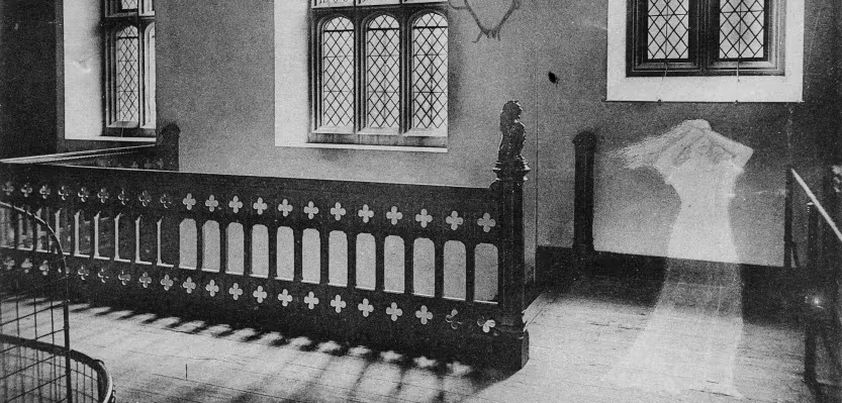 Algernon Blackwood’s most famous ghost story, The Empty House could best be described as a horror story without the horror (no blood, gore, demonic possession, attacks by spectral beings, etc.). The story’s power lies in Blackwood’s ability to inspire terror through atmosphere alone. Its major themes are fear and the interdependence of the two psychic sleuths in confronting their fears. Initially, the ghosts go about their nightly business seemingly indifferent to the visitors. The perceived threat from “IT” only emerges when one of them gives way to fear and they begin to flee. Other themes: curiosity, courage, the supernatural. More…
Algernon Blackwood’s most famous ghost story, The Empty House could best be described as a horror story without the horror (no blood, gore, demonic possession, attacks by spectral beings, etc.). The story’s power lies in Blackwood’s ability to inspire terror through atmosphere alone. Its major themes are fear and the interdependence of the two psychic sleuths in confronting their fears. Initially, the ghosts go about their nightly business seemingly indifferent to the visitors. The perceived threat from “IT” only emerges when one of them gives way to fear and they begin to flee. Other themes: curiosity, courage, the supernatural. More…
Who Will Greet You At Home
 In this surreal horror story from Lesley Nneka Arimah, children are created in the form of craft dolls by their mother, blessed by their grandmother or an elderly substitute, and nurtured for a year until they “become flesh”. In the interim they feed, move and act like babies, but in their doll form. The dolls can be made from any material (straw, sticks, clay, etc.) that is strong enough to last a year. But there are rules. When Ogechi, the impoverished protagonist desperate to have a child breaks one, bad things happen. Themes: magic, poverty, exploitation, isolation, obsession, motherhood. More…
In this surreal horror story from Lesley Nneka Arimah, children are created in the form of craft dolls by their mother, blessed by their grandmother or an elderly substitute, and nurtured for a year until they “become flesh”. In the interim they feed, move and act like babies, but in their doll form. The dolls can be made from any material (straw, sticks, clay, etc.) that is strong enough to last a year. But there are rules. When Ogechi, the impoverished protagonist desperate to have a child breaks one, bad things happen. Themes: magic, poverty, exploitation, isolation, obsession, motherhood. More…
The End of the Party
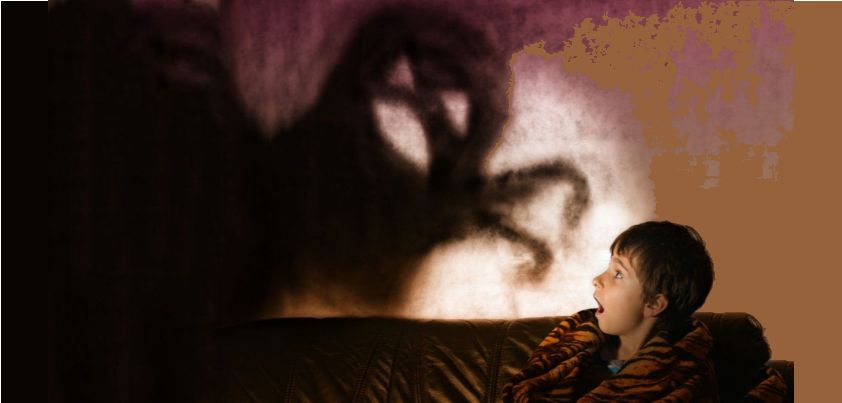 Although the 9-year-old twins in this Graham Greene story look the same, they have very different psychological dispositions. The first-born (Peter) is self-confident and has a special connection with his brother. The younger (Francis) has an anxiety disorder that results in unreasoning fear, particularly of the dark. Peter feels what Francis feels, and is fiercely protective of him. Despite their best efforts to avoid it, the two attend a birthday party that will include a game of hide-and-seek in the dark. During the game, a thoughtless act by Peter has tragic results. Themes: innocence, brotherhood, connection, fear, adult insensitivity, death. More…
Although the 9-year-old twins in this Graham Greene story look the same, they have very different psychological dispositions. The first-born (Peter) is self-confident and has a special connection with his brother. The younger (Francis) has an anxiety disorder that results in unreasoning fear, particularly of the dark. Peter feels what Francis feels, and is fiercely protective of him. Despite their best efforts to avoid it, the two attend a birthday party that will include a game of hide-and-seek in the dark. During the game, a thoughtless act by Peter has tragic results. Themes: innocence, brotherhood, connection, fear, adult insensitivity, death. More…
A Face in the Dark
 The power of this very short horror story from Ruskin Bond is in the way the events described mirror what one might experience in a nightmare. As an alternative to supernatural forces, Bond cleverly presents a logical explanation for the night’s events: the way faces can appear ghostly by torchlight. Either way, the major theme of the story is fear when confronted with the unknown. A possible moral is that we shouldn’t judge people who look or dress differently due to their race, class, gender identity, religion, etc. Other themes include the supernatural and imagination vs. reality. More…
The power of this very short horror story from Ruskin Bond is in the way the events described mirror what one might experience in a nightmare. As an alternative to supernatural forces, Bond cleverly presents a logical explanation for the night’s events: the way faces can appear ghostly by torchlight. Either way, the major theme of the story is fear when confronted with the unknown. A possible moral is that we shouldn’t judge people who look or dress differently due to their race, class, gender identity, religion, etc. Other themes include the supernatural and imagination vs. reality. More…
The Tell-Tale Heart
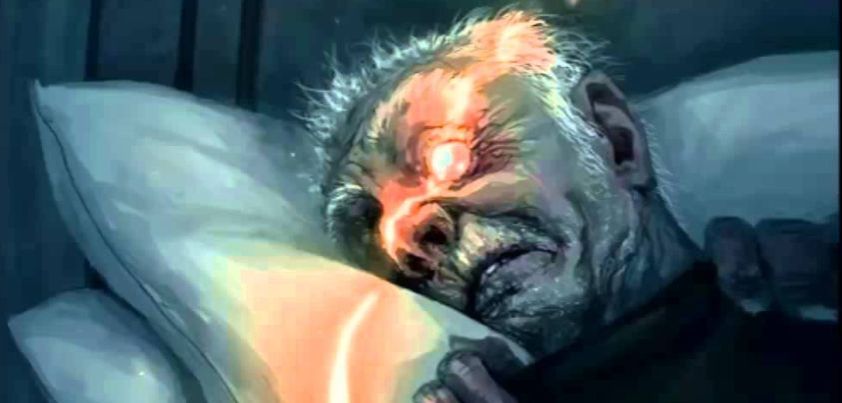 In this Gothic horror story by Edgar Allan Poe, the narrator describes how cleverly he or she has planned and carried out the murder of an old man. The only reason given is fear of what is described as the old man’s ‘vulture eye’. The narrator’s purpose in telling the story is to convince the audience that he or she is not mad. There are a number of ironic aspects to the story, perhaps the greatest being that in trying to prove his or her sanity, the narrator clearly demonstrates the opposite. Themes: mental illness, fear, time, guilt vs. innocence. More…
In this Gothic horror story by Edgar Allan Poe, the narrator describes how cleverly he or she has planned and carried out the murder of an old man. The only reason given is fear of what is described as the old man’s ‘vulture eye’. The narrator’s purpose in telling the story is to convince the audience that he or she is not mad. There are a number of ironic aspects to the story, perhaps the greatest being that in trying to prove his or her sanity, the narrator clearly demonstrates the opposite. Themes: mental illness, fear, time, guilt vs. innocence. More…
The Toll-House
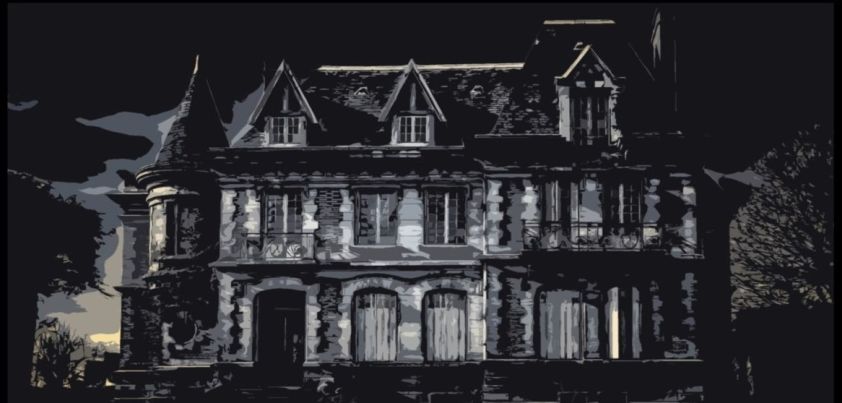 Today we have another classic horror story from W. W. Jacobs. Four young travelers are drinking (tea of all things!) at an Inn. They are discussing the supernatural, and it soon becomes clear that three are believers to varying degrees and one is a total skeptic. One of them tells a story about a nearby haunted house that takes a “toll” of at least one life from every family or group that lives there—however short the time. Foolishly, they decide to put the story to the test. Themes: bravado, fear, the supernatural. More…
Today we have another classic horror story from W. W. Jacobs. Four young travelers are drinking (tea of all things!) at an Inn. They are discussing the supernatural, and it soon becomes clear that three are believers to varying degrees and one is a total skeptic. One of them tells a story about a nearby haunted house that takes a “toll” of at least one life from every family or group that lives there—however short the time. Foolishly, they decide to put the story to the test. Themes: bravado, fear, the supernatural. More…
Strawberry Spring
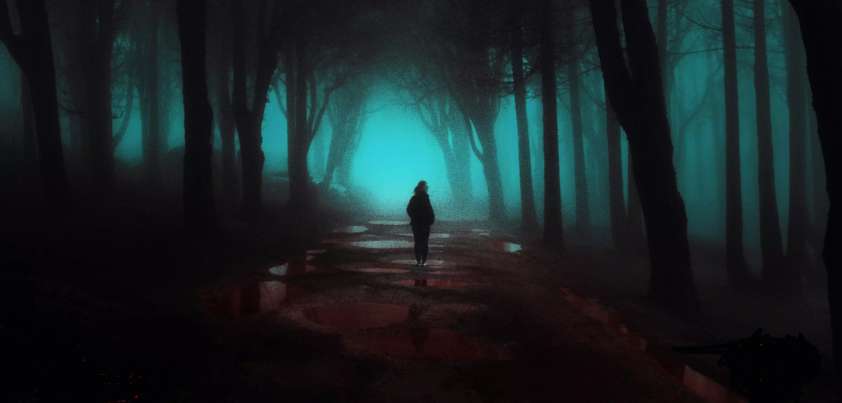 In this story by Stephen King, a serial killer stalks women in a small college community. The murders, which always take place at night, become increasingly vicious. Set in a rare false (strawberry) spring, thick fog provides perfect cover for the killer. Panic sets in as students realize the killer could be anyone on campus. When the weather breaks, the murders stop. Eight years later, during the next strawberry spring, they begin anew and, in a memorable twist, the narrator thinks he knows the identity of the killer. Themes include violence, fear, rumor and paranoia, confusion, memory, dissociation. More…
In this story by Stephen King, a serial killer stalks women in a small college community. The murders, which always take place at night, become increasingly vicious. Set in a rare false (strawberry) spring, thick fog provides perfect cover for the killer. Panic sets in as students realize the killer could be anyone on campus. When the weather breaks, the murders stop. Eight years later, during the next strawberry spring, they begin anew and, in a memorable twist, the narrator thinks he knows the identity of the killer. Themes include violence, fear, rumor and paranoia, confusion, memory, dissociation. More…
The Legend of Sleepy Hollow
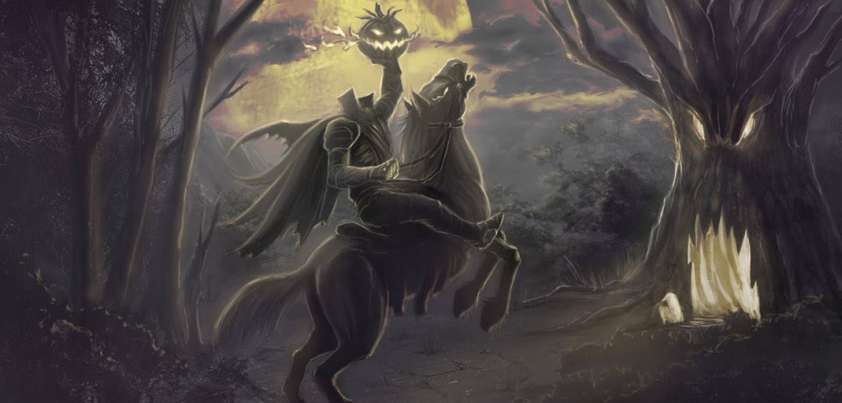 The central character of this story by Washington Irving is a greedy city schoolmaster who moves to a school in a sleepy country town and sets about getting rich by marrying the daughter of a wealthy landowner. The teacher’s proposal is rejected, and he disappears one night after being chased by the “ghost” of a headless horseman. Major themes include storytelling (tall-tales), superstition, greed (Ichabod), fickleness (Katrina), ambiguity (in relation to both the horseman’s identity and Ichabod’s fate), and city vs. country perceptions (conniving sophistication vs. integrity and practicality). More…
The central character of this story by Washington Irving is a greedy city schoolmaster who moves to a school in a sleepy country town and sets about getting rich by marrying the daughter of a wealthy landowner. The teacher’s proposal is rejected, and he disappears one night after being chased by the “ghost” of a headless horseman. Major themes include storytelling (tall-tales), superstition, greed (Ichabod), fickleness (Katrina), ambiguity (in relation to both the horseman’s identity and Ichabod’s fate), and city vs. country perceptions (conniving sophistication vs. integrity and practicality). More…
Born of Man and Woman
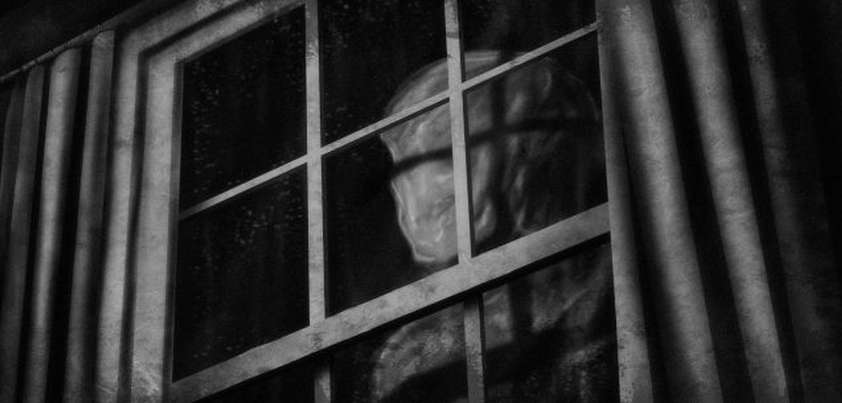 In this moving story by Richard Matheson, what appears to be a mutant eight-year-old child has been locked in a basement for most of its life because of his/her monstrous form and size. The child does not appear to be possessed by an evil or supernatural force and is inquisitive about the outside world. Sadly, it is beaten every time he/she ventures upstairs or attempts to look outside. The horror aspect comes from the cruelty the child suffers and the threat of impending violence if it continues. Themes include appearance, alienation, isolation and loneliness, desire for acceptance, cruelty, retaliation. More…
In this moving story by Richard Matheson, what appears to be a mutant eight-year-old child has been locked in a basement for most of its life because of his/her monstrous form and size. The child does not appear to be possessed by an evil or supernatural force and is inquisitive about the outside world. Sadly, it is beaten every time he/she ventures upstairs or attempts to look outside. The horror aspect comes from the cruelty the child suffers and the threat of impending violence if it continues. Themes include appearance, alienation, isolation and loneliness, desire for acceptance, cruelty, retaliation. More…
The Moonlit Road
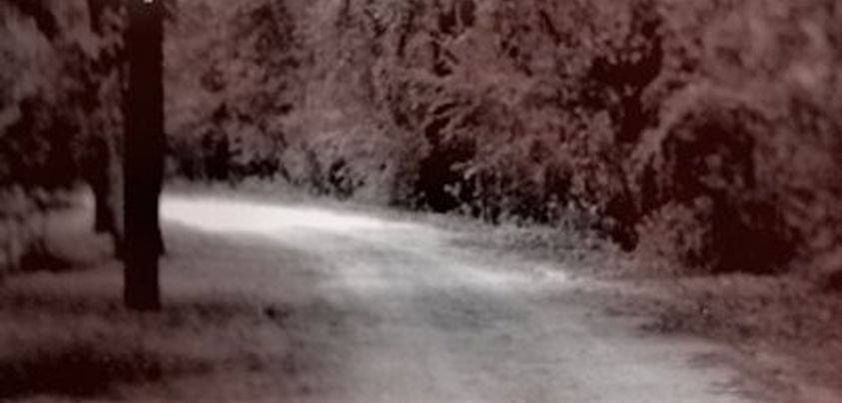 In this famous gothic horror story by Ambrose Bierce, a rich man has a loving wife who he does not trust. He sets a trap that doesn’t go as planned, resulting in him accidentally killing her. The unfortunate woman’s ghost, which is unaware who killed her, tries to contact him. This sets off a chain of events that ruins the lives of both the rich man and their only son. We hear the story from three perspectives: those of the son, a man we assume to be the husband/killer, and the ghost herself as told through a medium. More…
In this famous gothic horror story by Ambrose Bierce, a rich man has a loving wife who he does not trust. He sets a trap that doesn’t go as planned, resulting in him accidentally killing her. The unfortunate woman’s ghost, which is unaware who killed her, tries to contact him. This sets off a chain of events that ruins the lives of both the rich man and their only son. We hear the story from three perspectives: those of the son, a man we assume to be the husband/killer, and the ghost herself as told through a medium. More…